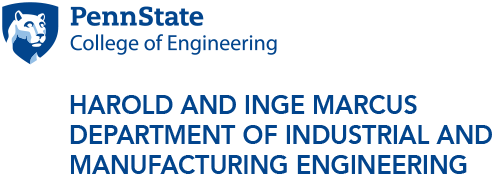
Vittal Prabhu says it is increasingly important to come up with innovative new ways to reduce the effect fleet vehicles have on the environment while keeping costs down and maintaining timely deliveries.
Green Fleets
Reducing the environmental impact of delivery systems while maintaining efficiencies and keeping costs down
5/16/2017
UNIVERSITY PARK, Pa. — New research at Penn State addresses the impact delivery trucks have on the environment by providing green solutions that keep costs down without sacrificing efficiency.
Reducing the impact large-vehicle emissions have on the environment is a real challenge due to delivery industry demands, explained Vittal Prabhu, a professor in the Harold and Inge Marcus Department of Industrial and Manufacturing Engineering.
“The size of fleets has increased, the transportation networks have become more complex and, perhaps most importantly, there is an increased demand for timely deliveries in tighter timeframes,” he said. “Therefore, it is increasingly important to come up with innovative new ways to cut down the effect these vehicles have on the environment while keeping costs down and maintaining timely deliveries.”
Prabhu is the co-author on two recently published papers that address these complex issues and present some promising solutions for the delivery industry.
“Just-in-time delivery for green fleets: A feedback control approach” was published in 2016 by Prabhu and Seokgi Lee (’13 Ph.D.), an assistant professor at the University of Miami.
Prabhu and Lee developed a new algorithm – called Greening via Energy and Emissions in Transportation (GEET) – to more effectively route fleet vehicles in order to reduce environmental effects.
The approach is unique because the products in this system are delivered “just-in-time,” meaning exactly when a customer specified.
“GEET determines the optimal departure time and vehicle cruising speeds that can be varied throughout the trip based on anticipated vehicle performance and delivery times,” said Prabhu. “This is the feedback part of the ‘feedback control approach’ to the problem.”
Through this new algorithm, the researchers saw, on average, a 12-16 percent reduction in fuel consumption and were able to implement this improvement within delivery systems in a short amount of time.
Lee and Prabhu teamed with Yuncheol Kang (’14 Ph.D.), an assistant professor at Hongik University in Seoul, Korea, on “Smart logistics: distributed control of green crowd-sourced parcel services,” which was also published in 2016.
In this study, the team looked at crowd-sourced parcel services, which can be compared to “Uber for deliveries.” In crowd-sourced parcel services, an individual can download an app to find packages that need to be delivered within their own neighborhood. This form of delivery is often faster than a single delivery truck; and with the growing popularity of on-demand transportation companies, such as Uber and Lyft, the cost for these personal deliveries are dropping.
Individuals with the app see the payout for transporting a package and can decide to accept or decline the job. For this reason, this type of delivery system is difficult to model because of many unknown factors. The supply and location of drivers, along with changes in demand for people to ship packages, is largely variable.
This uncertainty can cause the overall delivery system to have significant inefficiencies specifically, drivers needlessly driving long distances to pick up packages and dropping them off. With more driving, carbon is released and the system becomes less green.
“This kind of system causes a lot of wasteful driving, which causes both economic and environmental burdens,” said Prabhu.
The researchers came up with an algorithm that attempts to pair drivers and packages to certain routes in order to reduce the overall effect of unnecessary mileage and carbon emissions.
When tested using computer simulations on a hypothetical crowd-sourced parcel company, this new method increased the company’s revenue by 6.4 percent by reducing fuel and emission costs by 2.5 percent.
It is the hope of the researchers to expand on their findings in order to offer more sustainable options to those within the delivery system sector.
“This is hopefully just the beginning,” said Prabhu. “We will continue to look at the issues within fleet operations and determine what other efficiencies can be applied in order to cut down on emissions while maintaining customer satisfaction.”




